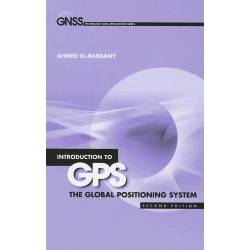
As an engineer, I always believed that the only clear way to communicate a theory or technique must involve the use of mathematics or data plots. Ahmed El-Rabbany’s book is the proof that this is not necessarily so.
Introduction to GPS: The Global Positioning System, now in its second edition, is clear and concise in its description of all the principles and main techniques behind GPS, supported only by simple examples and figures. The formulas are so elementary (and rare) that they are embedded naturally in the text.
As an engineer, I always believed that the only clear way to communicate a theory or technique must involve the use of mathematics or data plots. Ahmed El-Rabbany’s book is the proof that this is not necessarily so.
Introduction to GPS: The Global Positioning System, now in its second edition, is clear and concise in its description of all the principles and main techniques behind GPS, supported only by simple examples and figures. The formulas are so elementary (and rare) that they are embedded naturally in the text.
Since this approach is maintained throughout the book, it turns out that the target reader is definitely not the satellite navigation engineer or researcher, but mainly managers, application users, sales people and others who need to gain a quick and easy understanding of all GPS related subjects.
Still, the author manages to give his readers insights into specific hot topics such as precise point positioning (PPP), on-the-fly ambiguity resolution, surveying techniques and integration of GPS with micro-electromechnical (MEMS) inertial systems. These are often neglected in volumes explicitly addressing expert readers, much less the GPS beginner.
Good references are provided at the end of each chapter for further reading on specific subjects. This second edition also adds brief overviews of other navigation systems. The final sections include a chapter describing a range of GPS applications and an appendix providing an overview of used reference systems, showing clearly the author’s vocation for the geodesy and surveying engineering side of satellite navigation.
The overall result is a book that successfully gathers all main satellite navigation topics in just 200 pages, providing the reader with an easy to follow and always clear explanation of the concepts behind satellite navigation.





